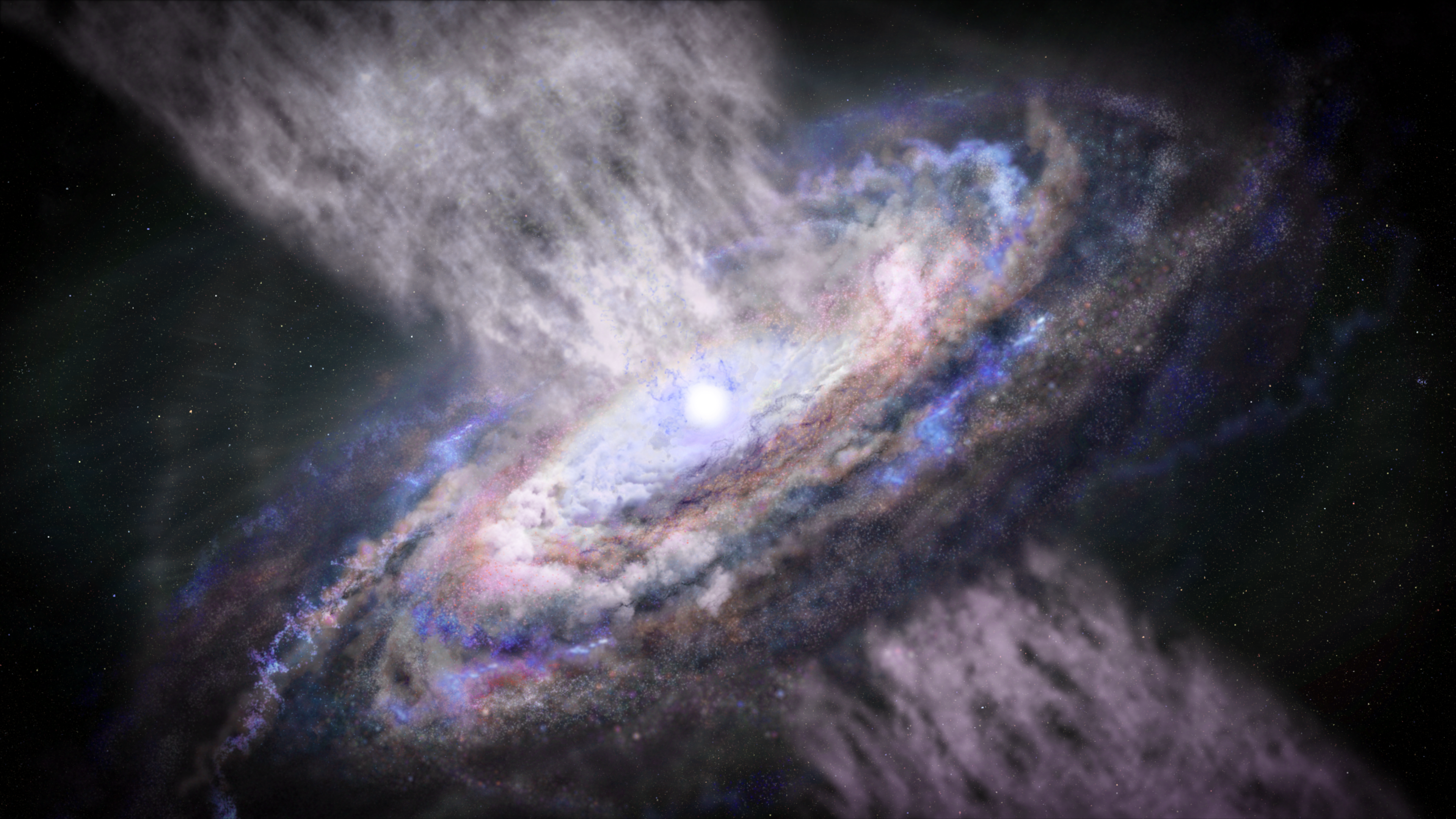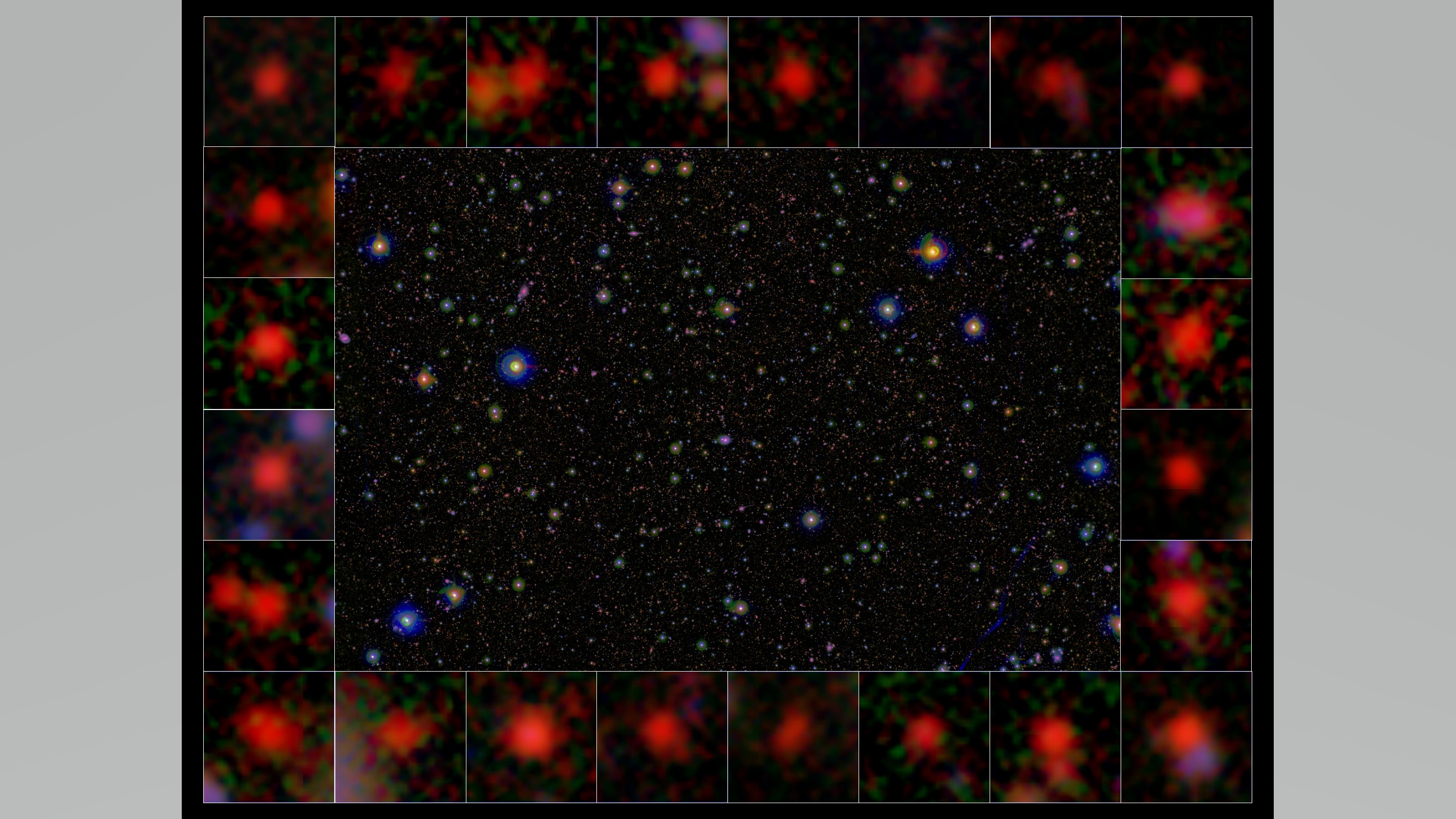Monster black holes may have murdered their host galaxies in the early universe
New findings place active black holes at the scene of the crime in the early universe.

Further evidence that some monster black holes have killed star formation in their galaxies has come to light in a study that peers back 12.5 billion years into the early universe.
Stars form when cold clouds of molecular hydrogen gas collapse, fragment and condense. The process of star formation continues in the Milky Way, as it does in many other galaxies, but some, such as large elliptical galaxies, appear to have ended their star formation billions of years ago.
Astronomers have suspected that feedback, in the form of powerful radiation emitted by material swirling around a supermassive black hole at the center of a galaxy, can heat molecular gas in that galaxy and prevent it from collapsing to form stars. It could possibly even blow that gas out of a galaxy entirely. Such galaxies are described as "red and dead," because once star formation shuts down, the only stars that remain are long-lived, cool red stars.
Related: Something is killing galaxies, and scientists are on the case
While there is plenty of indirect evidence that feedback from black holes can suppress star formation, astronomers are still awaiting conclusive observations of this process occurring and are working to understand how it happens. Now, a research team has shown that galaxies in the early universe that have stopped forming stars possess central black holes that are more active than those in galaxies that are still forming stars.
The team, led by Kei Ito of SOKENDAI (the Graduate University for Advanced Studies) in Japan, scoured the Cosmic Evolution Survey (COSMOS) archives for distant galaxies to test the hypothesis that active black holes and red-and-dead galaxies are connected. COSMOS
involves some of the largest and most powerful telescopes, such as the Subaru Telescope in Hawaii, the Very Large Array radio telescope in New Mexico, the Hubble Space Telescope and the European Space Agency's XMM-Newton X-ray telescope.
Get the Space.com Newsletter
Breaking space news, the latest updates on rocket launches, skywatching events and more!
Ito's team peered at galaxies as they existed 9.5 billion to 12.5 billion years ago, with the oldest galaxies having formed just 1.3 billion years after the Big Bang. The researchers were looking for X-ray and radio signals from active black holes, but because those signals are quite feeble, they had to combine, or "stack," the X-ray and radio images for several of these distant galaxies to improve the signal-to-noise ratio, and then average the combined data.

The team found that the red-and-dead galaxies had stronger black hole activity than the galaxies that were still forming stars during the same period.
Although the new findings, published in April in The Astrophysical Journal, do not prove that black hole feedback is quenching star formation, they do strengthen the hypothesis by connecting active black holes to red-and-dead galaxies. Scientists hope NASA's James Webb Space Telescope will provide further evidence after beginning science operations this summer.
Follow Keith Cooper on Twitter @21stCenturySETI. Follow us on Twitter @Spacedotcom and on Facebook.
Join our Space Forums to keep talking space on the latest missions, night sky and more! And if you have a news tip, correction or comment, let us know at: community@space.com.

Keith Cooper is a freelance science journalist and editor in the United Kingdom, and has a degree in physics and astrophysics from the University of Manchester. He's the author of "The Contact Paradox: Challenging Our Assumptions in the Search for Extraterrestrial Intelligence" (Bloomsbury Sigma, 2020) and has written articles on astronomy, space, physics and astrobiology for a multitude of magazines and websites.









